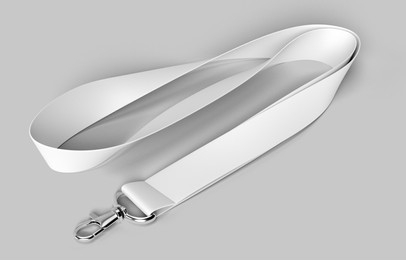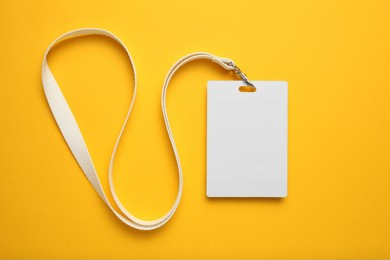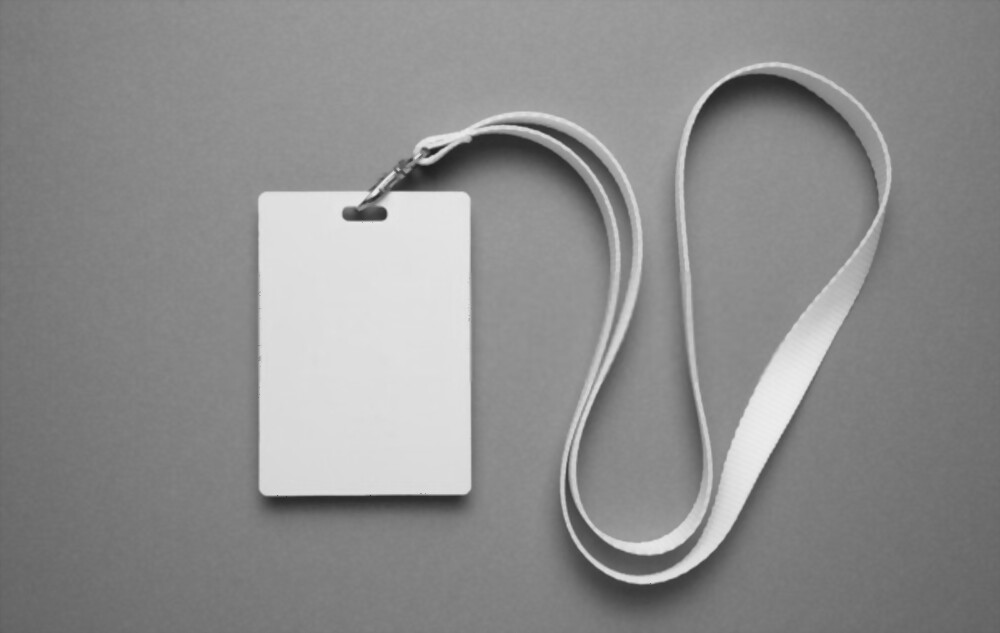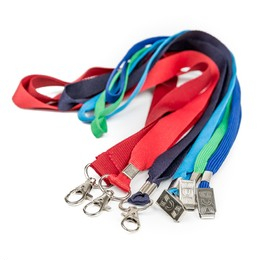From bustling conventions to corporate offices and adventurous expeditions, lanyards have become an indispensable accessory for holding identification cards, keys, and even small tools. But have you ever wondered about the different standard lanyard sizes available?
Various standard lanyard sizes are available, but the most common lengths are 36 inches, 18 inches, and 12 inches. These lengths, including the clip or attachment piece, are measured from end to end. However, some lanyards may be customized to fit specific needs and preferences. It is also important to note that lanyard widths may vary from 1/4 inch to 3/4 inch, depending on the intended use and design.
Prepare to unravel the secrets behind the lengths and widths that dictate the perfect fit for your needs.
Common Lanyard Widths

Here are some of the most common widths of lanyards:
3/8″
This is a narrow and lightweight lanyard that is often used for ID badges or key chains. It is a good option for those who prefer minimalism and do not want the lanyard to get in the way. However, it may not be suitable for heavier items as it is not strong enough to hold them securely.
1/2″
This is one of the most popular widths of lanyards. It is slightly wider and stronger than the 3/8″ lanyard and can hold heavier items more securely. It is also versatile and can be used in a variety of situations, from corporate events to concerts.
5/8″
This is a wider lanyard that provides more visibility and can hold heavier items. It is often used in sporting events and concerts where the lanyard needs to be visible from a distance. However, its width can also make it more cumbersome and may not be suitable for everyday use.
3/4″
This is a wider lanyard that is suitable for heavy-duty use. It is often used for trade shows and conventions where heavy items need to be carried around. However, its width can make it less comfortable to wear for extended periods of time.
5. 1″
This is the widest lanyard available and is suitable for very heavy items or when visibility is critical. It is often used by law enforcement personnel and other professionals who need to display their IDs or credentials prominently. However, its width may make it too noticeable or cumbersome for everyday use.
Standard Lanyard Lengths

Lanyard length is typically measured from end to end, including the attachment hardware. The attachment hardware can vary depending on the type of lanyard, but common examples include swivel hooks, bulldog clips, split rings, and badge holders. It is important to consider the type of attachment hardware when choosing the appropriate length of lanyard.
Some of the most common lengths of lanyards include:
- 36″ lanyards: These are commonly used for short events or in situations where the wearer doesn’t need to display ID or credentials frequently.
- 38″ lanyards: These are similar to 36″ lanyards but provide a bit more length, making them more comfortable for longer-term wear.
- 42″ lanyards: These are often used for special events or VIP access where the wearer needs to display ID or credentials prominently.
- 48″ lanyards: These are commonly used in industries such as construction or manufacturing where workers need to keep their ID or credentials visible at all times.
- 52″ lanyards: These are typically longer than standard lanyard lengths and are often used for outdoor events or activities where the wearer needs more freedom of movement.
Lanyard Sizes
Below I have discussed each size in more detail.
10 × 450 mm
For those who prefer a smaller and more discreet lanyard, the 10-millimeter width and 450-millimeter length options may be a perfect choice. This size is often used to secure small attachments such as office ID cards, card pouches, or plastic-encased name tags.
So whether you need a lanyard for work or personal use, the 10mm x 450mm size may be just what you need to keep your important items close at hand.
Even with its smaller size can still effectively serve its primary purpose of displaying important information for security and recognition.
15 × 450 mm
If you’re looking for a lanyard size that is slightly wider than the 10mm option but still suitable for smaller necks, the 15mm x 450mm lanyard may be a perfect choice. While only a few millimeters wider than the previous size, this lanyard is commonly used as a name tag holder for kids.
Whether your child needs a lanyard for a school event, birthday party, or any other occasion, this size offers a great way to keep their name tag or ID card visible while also adding a touch of style and personality.
20 × 450 mm
Many office workers choose a lanyard that measures 20mm x 450mm and can be customized with their company’s design. This size provides ample space for creativity, allowing the company to showcase its logo and add a professional touch to the worker’s appearance. The wider width of 20mm also allows for the display of text, like a company motto or mission statement, making it a great option for events and conferences.
Related: Complete Guide About Standard Size Of Name Tag
Lanyard Types

There are several types of lanyards available in the market, each with its unique features and applications. Some of the most common types of lanyards are:
Polyester Lanyards – These lanyards are made of durable polyester material and are perfect for daily use. Logos or text can be added to them and they are available in a variety of colors and sizes.
Nylon Lanyards – Made from soft, lightweight nylon, nylon lanyards are comfortable to wear. They are perfect for sports events, concerts, or outdoor activities. Nylon lanyards can also be customized with logos or text.
Woven Lanyards – Woven lanyards are made of high-quality polyester material and have a smooth texture. They are designed to withstand heavy usage and are ideal for long-term use. Woven lanyards are also customizable with logos or text.
Tubular Lanyards – These lanyards are made from a tube-like polyester material that is soft and comfortable. With logos or text, they can also be customized to hold badges, ID cards, or keys.
Reflective Lanyards – As they reflect light in low light conditions, reflective lanyards can be used in dark environments. Construction sites, warehouses, and outdoor activities can all benefit from these products.
Beaded Lanyards – These stylish lanyards are an alternative to traditional lanyards. Beads, pearls, and crystals make them perfect for special events, weddings, or parties.
Breakaway Lanyards – Breakaway lanyards have a safety mechanism that allows them to break apart if pulled forcefully. They are ideal for use in schools, hospitals, or factories, where safety is a top priority.
Other Lanyard Considerations

1. Color:
While size is important, so is color. Consider the purpose of the lanyard, and choose colors accordingly. For example, if it’s for a sports team, you may want to choose the team’s colors. If it’s for a company or organization, you may want to choose the colors that represent the brand.
2. Material:
Lanyards can be made of various materials, such as nylon, polyester, or cotton. Each material has its own unique characteristics and strengths, so consider which material is best for your intended use. For example, if the lanyard will be subjected to harsh environments or weather conditions, a durable material like nylon may be the best choice.
3. Attachment Hardware:
Lanyards come with various attachment hardware options, such as swivel hooks, lobster clasps, or bulldog clips. Depending on what the lanyard is being used for, certain attachment hardware may be more suitable than others. For example, if the lanyard will be used to hold a badge or ID card, a bulldog clip may be the most secure choice.
Tips for finding the right lanyard for your needs:
- Consider the purpose of the lanyard and what you’ll be attaching to it.
- Look for lanyards that offer customizable options, such as material, color, and attachment hardware.
- Research various lanyard suppliers and read reviews from previous customers to ensure quality and customer satisfaction.
- When in doubt, consult with a lanyard expert or supplier for guidance on selecting the right lanyard for your specific needs.
FAQs
What is the length and width of a lanyard?
The length and width of a lanyard can vary depending on the style and intended use. However, a standard lanyard for ID badges or keys is typically around 36 inches in length and 0.5 inches in width.
What size is a lanyard card in CM?
The size of a lanyard card can also vary, but a common size is 8.5 cm x 5.4 cm (3.375 in x 2.125 in).
How thick is a standard lanyard?
The thickness of a standard lanyard can vary depending on the materials used and the intended use. However, a common thickness for a polyester lanyard is around 0.04 inches (1mm).